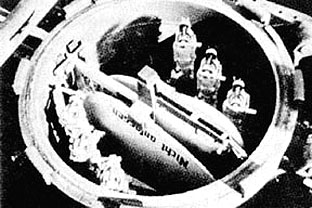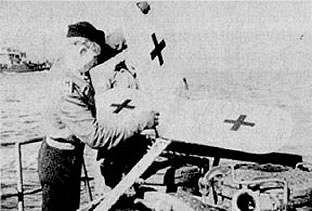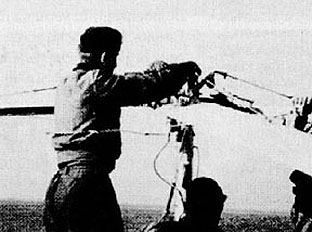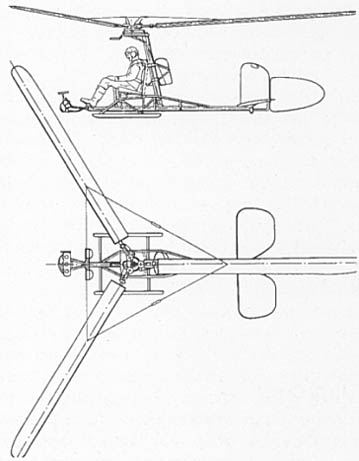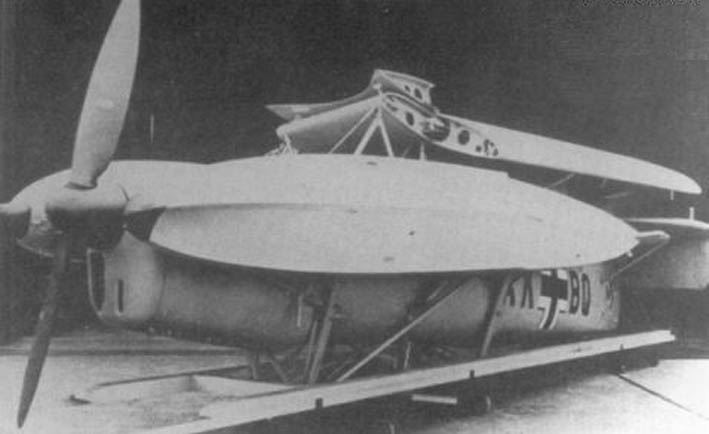Submarine Aircraft Carriers (SAC) were developed prior to the Second World War, however there were various countries that carried on their development just before and during the second world war.
The allied forces seemed to have discounted the idea prior to the outbreak of the war, although the French had a huge SAC, almost a cruiser at the start of the war, Surcouf. The British M-2, a modified M-Class Submarine Cruiser, was the first to carry an aircraft, which was housed in a hanger to the front of her conning tower. The M-Class was a development of the K-Class and carried a single 12in gun (that could be fired from submerged, with only the gun barrel and the periscope out of the water. The muzzle had a bead fitted which made aiming possible in a similar fashion to a rifle, reloading had to occur on the surface). The Japanese and the Germans similarly toyed with the idea during hte war. The giant I-400 was designed with the idea of destroying the Panama Canal and slowing the onslaught against the Japanese.
Surcouf’s keil was laid in December 1927, launched 18 October 1929 and commissioned in to the French Navy during May 1934. In 1939 Surcouf was the largest submarine in the world. Her short wartime career is laced with controversy and conspiracy theories.
She was actually designed as an “underwater cruiser,” intended to seek and engage in surface combat. For recconaisance she carried an observation float plane in a hangar built into the after part of the conning tower. For take off and landing the plane would use the sea, taxi to the sub and be winched on and off board by a crane.
For battle she was armed with twelve torpedo tubes and a twin eight-inch (203 mm) gun turret forward of the conning tower. The guns were fed from a magazine holding 600 rounds and controlled by a director with a 40 foot (12 m) rangefinder, mounted high enough to view a seven-mile horizon. In theory, the observation plane could direct fire out to the guns’ 15 mile (24 km) maximum range. AA cannon and machine guns were mounted on the top of the aircraft hangar.
Surcouf also carried a 5-metre motorboat, and contained a cargo compartment with fittings to restrain up to 40 prisoners. The submarine’s fuel tanks carried enough fuel for a 10,000-nautical-mile range and supplies for 90-day patrols could be carried. 600 rounds for the 8 in guns were carried.
She was one of three “corsair” boats (only one was built in the end) designed to get around the Washington Naval Treaty, which had placed strict limits on naval construction by the major naval powers such as Great Britain, France Germany and America. The Treaty omitted any controls over submarines, yet strictly controlled the building of other surface combattents.
The British got around the treaty by creating the Armoured Merchant Cruisers (AKA Admiralty Made Coffin), these being merchant vessels with strong points built in to receive weapons. In the event they were not very effective, except as extra defence for the Atlantic Convoys. These are not to be confused with the Q boats or other Merchant Men that were armed or equiped with aircraft during hostilities.
In 1940, In 1940, Surcouf was based at Cherbourg. But in June 1940, when the Germans invaded, she was being refitted at Brest. Under the power of only one engine and with a jammed rudder, she limped across the English Channel and sought refuge in Plymouth.
On 3 July the British, concerned that the French Fleet would be taken over by the German Kriegsmarine when the French surrendered and the throught the collabration of the Vichy governemnt, executed Operation Catapult.
The Royal Navy blockaded the harbours where French warships were anchored and delivered an ultimatum: re-join the fight against Germany, be put out of reach of the Germans or scuttle the ships. Most accepted willingly, with two notable exceptions: the North African fleet at Mers-el-Kebir and the ships based at Dakar. These prompted the British “treachery” and the French ships suffered hundreds of casualties when the British opened fire.
In Plymouth, Surcouf also resisted and in capturing the submarine, two British officers and one French sailor were killed as a Royal Navy boarding party boarded her under the Op Catapult ultimatum.
The French bitterness caused by these actions escalated when the British attempted to repatriate the captured French sailors (note: these were the sailors who wished to go home, not the volunteers for the Free French Forces which included Army, Navy and Air Force personnel, Frenchmen rescued from Dunkirk were similarly repatriated if they wished when Franch surrendered) the British hospital ship that was carrying them back to France was sunk by the Germans, and many of the French blamed the British for the deaths.
Surcouf returned to the fight in August 1940, after being refitted by the British. She was given to the Free French Forces Navy ( and joined the remainder of the French Fleet (Forces Navales Françaises Libres, FNFL). Her Captain was Louis Blaison (the only officer not repatriated from the original crew). Because of the British-French tensions with regard to the submarine, accusations were made by each side that the other was spying for Vichy France; the British also claimed that Surcouf was attacking British ships. Later, a British officer and two sailors were put on board for “liaison” purposes.
During the war, she was involved in the Dec 1941 retaking of Saint-Pierre and Miquelon (a French archipelago some 30 kilometres south of Newfoundland) from Vichy control (Free France being a sort of state with out a nation). On 20 December, they joined the Free French corvettes Mimosa, Aconit, and Alysse, and on 24 December took control of the islands for Free France without resistance.
One rumour associated with this event is that, on 1 January 1942, Roosevelt dispatched an American destroyer to Saint-Pierre to restore it to Vichy control. Surcouf allegedly fired on the destroyer, killing one or two American sailors.
No documentation supports this rumour, and significant circumstantial evidence contradicts it. It is documented that later that January the Free French decided to send Surcouf to the Pacific theater of war after she resupplied at Bermuda. Her movement south triggered rumours that she was going to liberate the island of Martinique for the Free French from Vichy control.
On 18 February 1942, Surcouf was lost with all hands. An official joint U.S. and Free French report stated that she left Bermuda on 12 February and was accidentally rammed and sunk by the American freighter Thompson Lykes near the Panama canal.
The report stated that the accident was due to both vessels running at night with no lights because of the menace of German U-boats. A later French investigation commission stated that the Surcouf had been sunk by US planes in the morning of the 18th in a “friendly fire” accident.
Like so much else about Surcouf, there are alternate/contradicting stories of her end. Disregarding her being swallowed by the Bermuda Triangle, one of the most popular is that she was caught in Long Island Sound refueling a German U-boat, and both submarines were sunk, either by the American submarines Mackerel (SS-204) and Marlin (SS-205) or a United States Coast Guard blimp.
Many stories add that much of the gold from the French Treasury was in Surcouf’s large cargo compartment, and that the wreck was found and entered in 1967 by Jacques Cousteau.
Personnally I don’t believe that she would have carried any French Treasury Gold, there would not have been time to unload it during June 1940, and the subsequent boarding by the Royal Navy during Op Catapult would surely have brought such a load to light. It may have come from else where but it seems a bit far fetched, and probably originated at the same time as the stories about the U-Boats laden with Nazi gold.
The plane she carried was a MB.411, specifically designed to be carried by Surcouf. it was a low-wing monoplanes with a single central float and two small stabilizing outrigger floats, that could easily be disassembled for stowage. Three aircraft were built, one MB.410 and two MB.411s were built; one MB.411 was carried on board. The aircraft were all similar and carried a crew of 1 or 2.
And now a few pics of the Surcouf.

This one may be prewar as she is flying the French Tri-colour rather than the Free French cross, below.

Free French Training unit flag. (The flag is similar to the ensign of the FNFL, below, but with proportion 1:2 (1.30 m x 2.60 m). It was manufactured in England. The flag is now preserved in the Célestins barracks of the Republican Guard in Paris
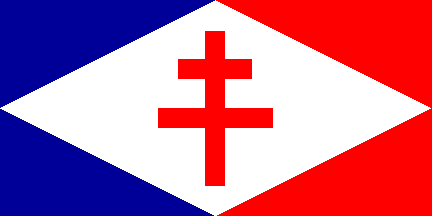
Free French Naval Ensign

End of part 1






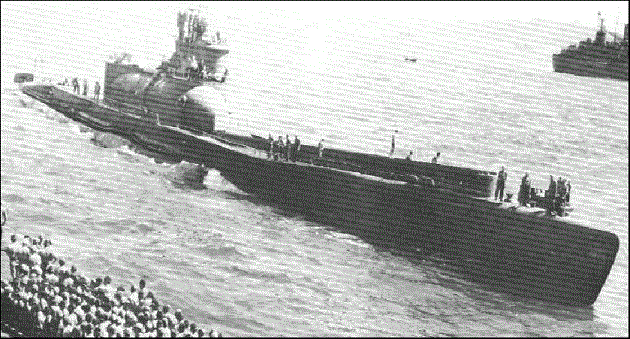

















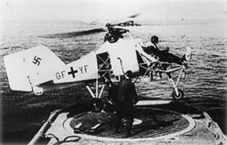
 On the ground
On the ground

